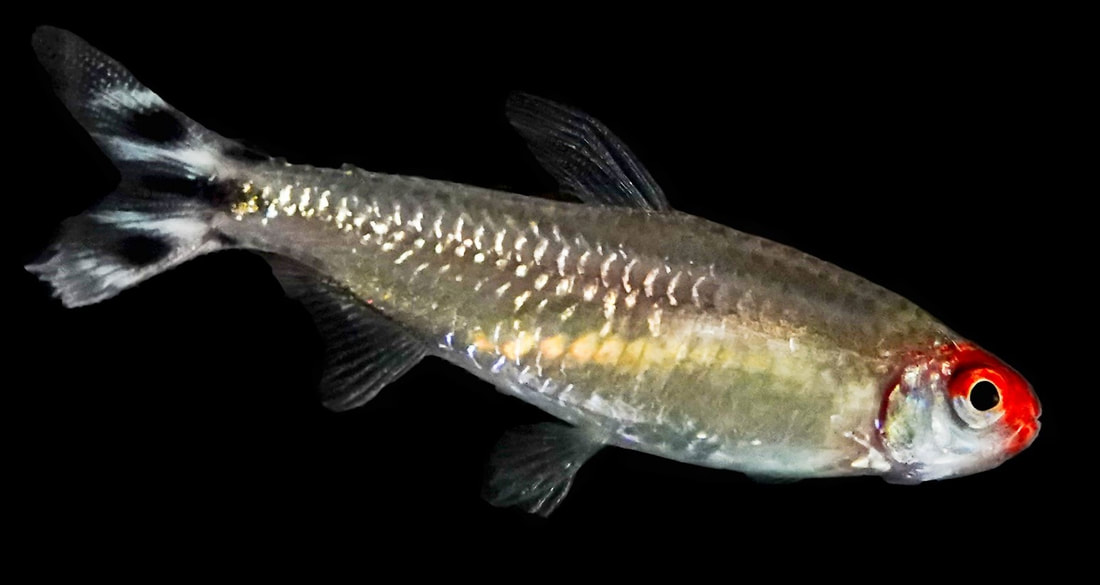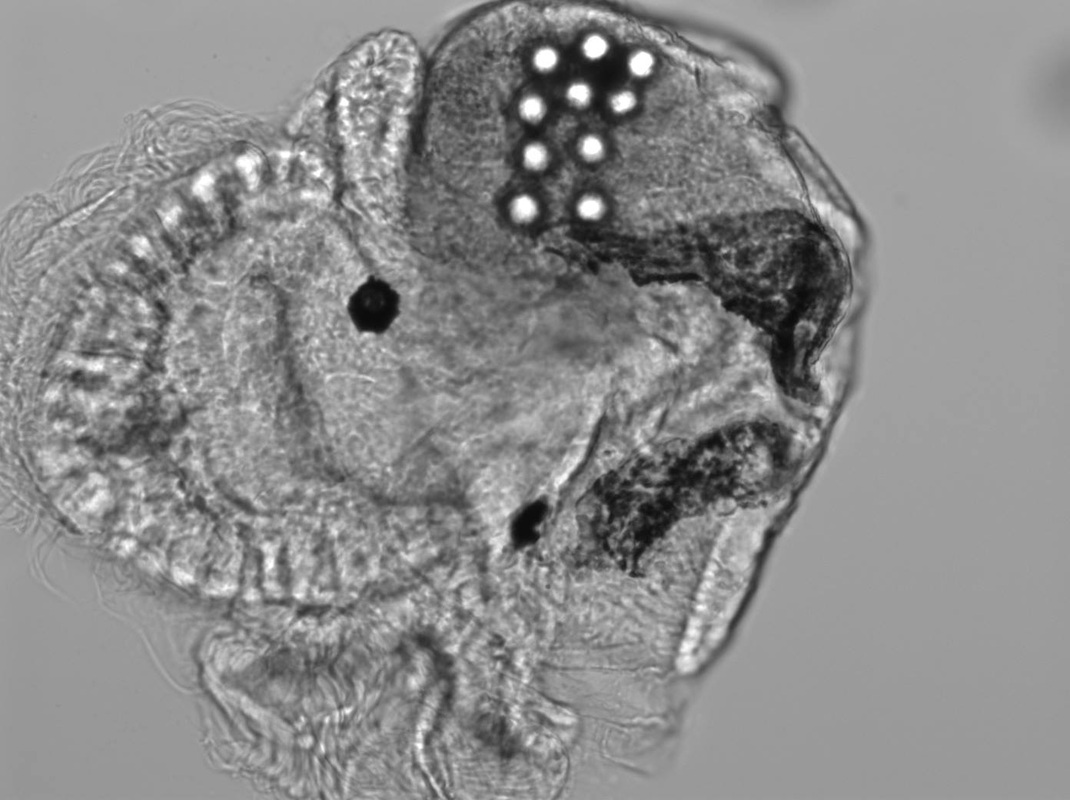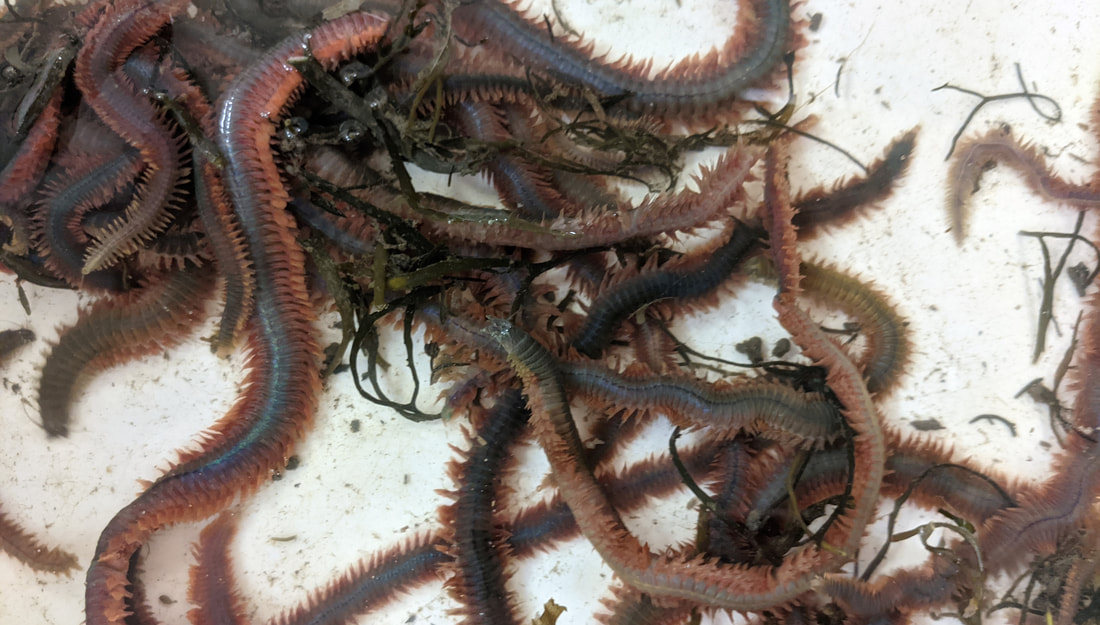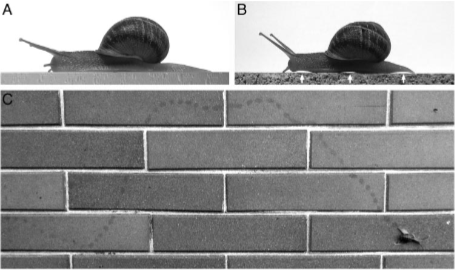research PUBLICATIONs
6. Reustle, J. W. N. L., Belgrad, B. B., McKee, A., Smee, D. L. 2-23. Barnacles as biological flow indicators. PeerJ.
LINK
5. McKee, A., Soto, A. P., Chen, P., and McHenry M. J. 2020. The sensory basis of schooling by intermittent swimming in the rummy-nose tetra (Hemigrammus rhodostomus). Proceedings of the Royal Society B.
LINK
4. McKee, A., and McHenry, M. J. 2020. The strategy of predator evasion in response to a visual looming stimulus in zebrafish (Danio rerio). Integrative Organismal Biology.
LINK
3. McKee, A., MacDonald, I., Farina, S. C., Summers, A. P. 2016. Undulation frequency affects burial performance in living and model flatfishes. Zoology. 119: 75-80
PDF
2. McKee, A. A., Newton, S. M., Carter, A. J. R. 2014. Influence of inbreeding on female mate choice in two species of Drosophila. Journal of Insect Behavior. 27:613-625
PDF
1. McKee, A., Voltzow, J., and Pernet, B. 2013. Substrate attributes determine gait in a terrestrial gastropod. Biological Bulletin. 224:53-61
PDF
LINK
5. McKee, A., Soto, A. P., Chen, P., and McHenry M. J. 2020. The sensory basis of schooling by intermittent swimming in the rummy-nose tetra (Hemigrammus rhodostomus). Proceedings of the Royal Society B.
LINK
4. McKee, A., and McHenry, M. J. 2020. The strategy of predator evasion in response to a visual looming stimulus in zebrafish (Danio rerio). Integrative Organismal Biology.
LINK
3. McKee, A., MacDonald, I., Farina, S. C., Summers, A. P. 2016. Undulation frequency affects burial performance in living and model flatfishes. Zoology. 119: 75-80
2. McKee, A. A., Newton, S. M., Carter, A. J. R. 2014. Influence of inbreeding on female mate choice in two species of Drosophila. Journal of Insect Behavior. 27:613-625
1. McKee, A., Voltzow, J., and Pernet, B. 2013. Substrate attributes determine gait in a terrestrial gastropod. Biological Bulletin. 224:53-61
Research Synopses
Burrowing in Marine Worms
Dorgan Lab, DISL As a postdoctoral researcher in Kelly Dorgan's lab at Dauphin Island Sea Lab. I investigated burrowing behavior in Nereid worms, specifically whether gait changes at sediment clines. I used pressure sensors, physical models, and thin aquaria with cameras to detect and understand worm behavior within sediment. Flow Induced Growth in Barnacles Dorgan Lab, DISL I collaborated on a project looking at how growth in barnacles is affected by different flow conditions. I contributed by measuring flow rates in and around barnacle enclosures where the barnacles were attached and grew. Rummynose tetra (Hemmigrammus rhodostomus). Photo credit: Shaun Hughes.
Escape Response in Zebrafish
McHenry Lab, UCI During my PhD I examined the escape response in zebrafish. I examined how zebrafish use their sensory systems to detect visual looming stimuli or impulse flow stimuli. I mentored an undergraduate, Naomi Carrillo, who helped with the collection of data for parts of this project. Parts of this study were published in the journal Integrative Organismal Biology. Burial in Flatfish Summers Lab, Friday Harbor Laboratories In this project I examined the burial behavior of different species of flatfish in the Pacific Northwest. I used high speed video and physical models to explain aspects of flatfish burial. The high speed video to the right is an example of a flatfish burying. This research has been published in the journal Zoology. Crepidula onyx larva with ten 20μm plastic beads in its gut.
Terrestrial Gastropod Locomotion Pernet Lab, CSU Long Beach In this project, I examined an alternative form of gastropod locomotion called "loping". In this form of locomotion, the snail lifts up its head, protrudes it forward, and places it back down on the substrate leaving a gap underneath its body. The snail then crawls over this gap, never touching the substrate beneath it. A snail may have many of these gaps under its body at a time which leaves a dotted mucus trail as seen in the figure to the right. My research determined that terrestrial gastropods may use loping as a way to conserve mucus while on absorbent substrates. This research was published in Biological Bulletin. |
A mass of large Nereid (Nereis virens) worms from Maine.
Schooling in Rummynose Tetra
McHenry Lab, UCI I studied the role of vision and flow sensing in schooling in rummynose tetra. I manipulated the ambient illuminance schools of tetra were exposed to and manipulated their flow sensing capabilities by temporarily compromising their lateral line with neomycin sulfate. I found that vision is necessary and sufficient for schooling in this species. Flow sensing contributes to attraction during schooling. I mentored an undergraduate nursing student, Phoebe Chen, who helped with data collection and is a coauthor on this project. The results of this project are published in the Proceedings of the Royal Society B. Lepidopsetta bilineata (rock sole) burying, filmed at 250 frames per second.
Feeding Behaviors in Larval Marine Invertebrates
Pernet Lab, CSU Long Beach In this project, I examined the abilities of different larval marine invertebrates to feed on different sized particles. I raised larva from the same brood and let them eat plastic beads of different sizes (from 0.45μm to 30μm in diameter) for ten minutes. I then counted how many beads they had eaten. This experiment was repeated at three ages of larva. I tested Crepidula onyx (a snail) larvae and Mytilus galloprovincialis (mussel) larvae. Other larval species were examined by other researchers in the lab. The Effect of Inbreeding on Mate Choice in Drosophila Carter Lab, CSU Long Beach In this project, I examined how low levels of inbreeding (one generation of sibling matings) that may be found in nature, effect female mate choice in two species of the fruit fly Drosophila. I compared the mate choices of inbred and outbred females which were presented with outbred and inbred males. I found that outbred females had a slight preference for outbred males, but that inbred females showed no preference at all. This suggests that inbred females may not be able to discriminate between inbred and outbred males. This research was published in the Journal of Insect Behavior. A.) Cornu aspersa adhesive crawling. B.) C. aspersa loping. C.) Dotted trail left behind a loping snail. (from McKee et. al. 2013).
|





